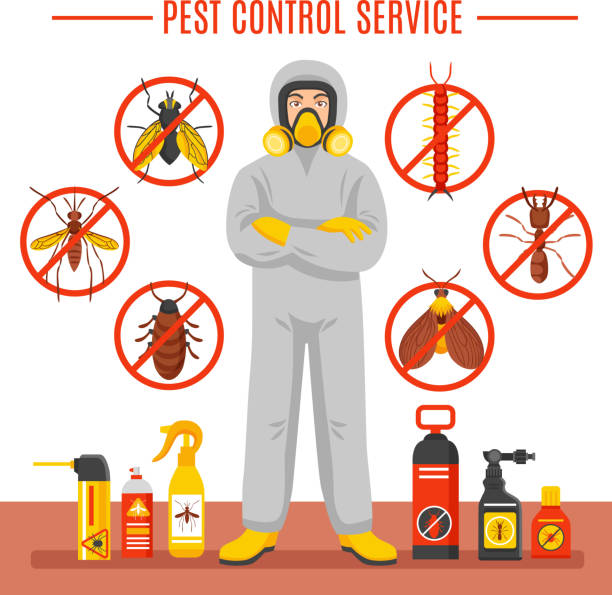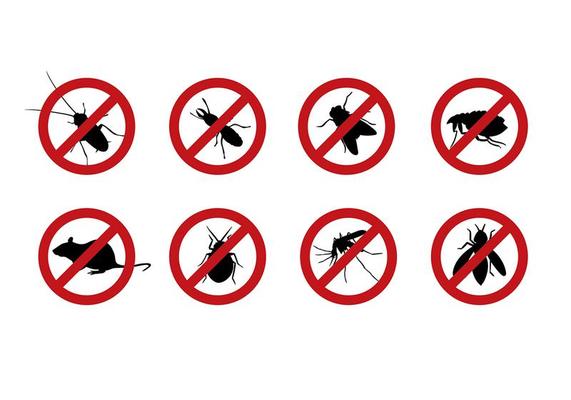Reliable Solutions for Rodents and Bugs from Pest Control Lockhart
Reliable Solutions for Rodents and Bugs from Pest Control Lockhart
Blog Article
Checking Out Infestation and Therapy Techniques in the Globe of Bug Control
The landscape of insect control includes a myriad of obstacles, particularly as invasions of typical house pests continue to develop. By integrating precautionary procedures with sophisticated administration methods, such as Integrated Bug Monitoring (IPM), homeowners can better protect their atmospheres.

Common Household Pests
When it pertains to handling our home, recognizing usual household pests is important. These bugs not just interrupt our convenience however can likewise present wellness threats and damages building. One of the most widespread house parasites consist of ants, roaches, rodents, termites, and bed insects.
Ants, commonly seen foraging in kitchen areas, can pollute food and establish large colonies. Roaches, recognized for their strength, can activate allergic reactions and spread microorganisms. Rodents, including computer mice and rats, can create architectural damage and carry diseases like hantavirus and salmonella. Termites, often described as "quiet destroyers," can jeopardize the integrity of wood frameworks, causing costly repairs. Bed pests, although not condition providers, can cause significant pain with their bites and bring about mental distress.
Acknowledging the signs of these bugs, such as droppings, nests, or bite marks, is essential for very early intervention (Pest Control Lockhart). Correct cleanliness methods, securing entry points, and preserving a clutter-free atmosphere are reliable preventative procedures. By recognizing these typical family bugs and comprehending their actions, home owners can take positive steps to mitigate invasions, ensuring a much healthier living environment
Comprehending Pest Infestations
Parasite problems can escalate rapidly, turning a minor nuisance right into a substantial trouble if not resolved promptly. Common elements contributing to invasions include bad cleanliness, structural vulnerabilities, and seasonal modifications that drive insects inside your home.
Determining the sort of bug is necessary, as various types display different habits and reproductive rates. Rodents might develop nests in concealed areas while insects like cockroaches thrive in wet settings. Early discovery typically hinges on recognizing signs such as droppings, munch marks, or uncommon noises, which can suggest a problem prior to it ends up being serious.
Warm, damp environments can help with the quick growth of bug populations, while modifications in landscape design or construction can accidentally create favorable settings. An informed technique to recognizing these dynamics lays the foundation for reliable pest administration approaches in the future.
Treatment Techniques and Strategies
Reliable treatment techniques and methods are essential for alleviating pest infestations and bring back a secure setting. A multifaceted method is commonly best, including chemical, organic, and mechanical strategies tailored to the certain bug and the extent of the infestation.
Chemical treatments include using insecticides and herbicides, which can successfully remove parasites. However, proper application and adherence to safety guidelines are essential to lessen dangers to people and non-target microorganisms. Integrated Insect Administration (IPM) motivates the cautious use chemicals as a last resort, relying rather on surveillance and limit degrees to figure out intervention needs.
Biological control approaches entail introducing all-natural killers or parasites to lower bug populations. This strategy is progressively popular, specifically in agricultural setups, as it promotes ecological sustainability.
Mechanical techniques, such as traps and obstacles, offer prompt relief from pests without presenting chemicals. Options consist of sticky traps for bugs or physical obstacles for rodents.
Inevitably, the option of therapy technique should think about the specific bug, the environment, and prospective influence on human health and wellness and communities. A well balanced combination of these approaches can efficiently take care of infestations while advertising lasting insect control options.
Preventive Procedures for Residence
Proactively dealing with bug issues before they intensify is essential for maintaining a healthy home setting (Pest Control Lockhart). Implementing efficient preventative measures can considerably lower the likelihood of infestations, ultimately securing both your property and wellness

Appropriate landscaping also plays a vital function in avoidance. Keeping bushes and trees trimmed away from your home reduces the chances of pests finding their means inside. Make sure that drain systems are functioning successfully to protect against standing water, which can attract in insects and various other bugs.
Lastly, regular examinations are a good idea. On a regular basis looking for signs of parasite task permits very early treatment. By adopting these preventative procedures, property owners can create a setting that is less hospitable to try these out bugs, thus enhancing their general quality of life and lowering the requirement for extensive bug control interventions.
Industrial Pest Control Approaches
A detailed approach to industrial pest control is necessary for companies intending to maintain a risk-free and sanitary atmosphere. Reliable techniques entail a combination of routine inspections, worker training, and the execution of Integrated Insect Administration (IPM) practices.
Routine examinations enable early discovery of pest activity, enabling prompt intervention. Services need to develop a routine timetable for these analyses, concentrating on high-risk locations such as cooking areas, storeroom, and garbage disposal websites. Staff member training is equally important; team should be educated on the indications of bug problems and the importance of reporting them right away.
Carrying out get more IPM techniques aids mitigate insect problems sustainably. This consists of environment alteration, such as securing access factors and lowering mess, as well as employing natural deterrents before resorting to chemical treatments.

In addition, working together with a qualified parasite control provider guarantees access to expert knowledge and innovative treatment choices. This partnership can bring about customized pest control plans tailored to the specific needs of business, lessening risks and enhancing overall efficacy. Eventually, a proactive and informed method promotes a pest-free environment, safeguarding both public wellness and service track record.
Final Thought
Finally, effective pest control demands a thorough understanding of typical home pests and their actions, combined with targeted treatment approaches. Executing you can try here safety nets together with treatment approaches such as Integrated Bug Management and organic control improves the capacity to alleviate infestations. Normal evaluations and a mix of chemical and mechanical options further add to maintaining pest-free settings. Ultimately, a well-rounded technique to pest management is crucial for protecting living rooms from unwanted intruders.
Report this page